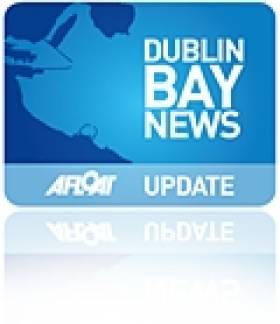Displaying items by tag: Artist impression
Dún Laoghaire ‘Urban Beach’ Artist impressions Published
#urbanbeach – Members of the public have five days left to share their views on a proposed new floating swimming pool and 'urban beach' facility for Dún Laoghaire Harbour. The facility is being developed by Dún Laoghaire Harbour Company as part of its long-term 'Masterplan' for the Harbour.
A consultation on the proposed new facility has been underway for the past month, and will close at 5pm on Friday, 27th September.
The plan for Dún Laoghaire Harbour includes a floating swimming pool containing heated and treated seawater, designed on a converted river barge which would be located on Berth 1 adjacent to the East Pier. The barge would also house an 'urban beach', and a second 'urban beach' would be located alongside the floating structure.
Today (20.09.13), Dún Laoghaire Harbour Company published artist impressions of the proposed facility. These are available to view at: www.dlharbour.ie/urbanbeach .
Commenting today, Tim Ryan, Operations Manager with DLHC, said: "We are the proud custodians of a beautiful, historic harbour, and it was important for us that the design of the proposed new floating swimming pool and urban beach reflects that."
"Our aim is to complement the existing attractions of the East Pier, and to draw inspiration from the Harbour's rich history. For example, the pod structures in the proposed new facility were inspired by the old-fashioned timber cargo crates, which would have been a common sight on the Piers when Dún Laoghaire was a more traditional shipping port. Each structure is single-storey and slightly dispersed to allow some visual penetration to the Harbour while ensuring privacy for bathers. Importantly, the floating pool will sit below pier level, and will therefore not detract from views of the Harbour from the East Pier.
"Changing and toilet facilities, a café, an administration area, and entrance and security features are also included in our initial plan. There is potential to have additional seating to the rear of the pod structures, as well as access to the café and toilet facilities both from the 'urban beach' side and from the Pier side."
It is anticipated that an entrance fee would be charged for the use of the urban beach and pool, and this is likely to be equivalent to the price of a cinema ticket. According to Dún Laoghaire Harbour Company, the proposed floating swimming pool and 'urban beach' has the potential to attract 140,000 visitors and to generate up to €1 million per annum for the local economy.
"Interested members of the public – including local residents and businesses, the sailing community, public representatives, and tourism organisations – have five days left to offer their views and recommendations on our proposals," said Tim Ryan. "We are hoping to submit a planning application before the end of 2013, with a view to having the new facility operational by the summer of 2015. In putting together our planning application, we will consider all views and feedback gathered during this public consultation process."
The floating swimming pool and urban beach project is being developed by Dún Laoghaire Harbour Company with support from Dún Laoghaire Rathdown County Council. The overall cost of the project is expected to be in the region of €2.5 million. Once operational, it is envisaged that the facility will be self-financing.
Submissions to the public consultation on the project can be made by post to: Urban Beach Design Team, Dún Laoghaire Harbour Company, Harbour Lodge, Crofton Road, Dún Laoghaire, or by email to [email protected].
Further information and frequently asked questions are available at www.dlharbour.ie/urbanbeach .





























































